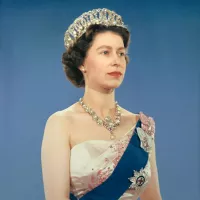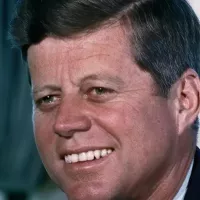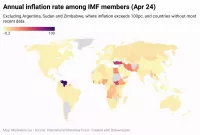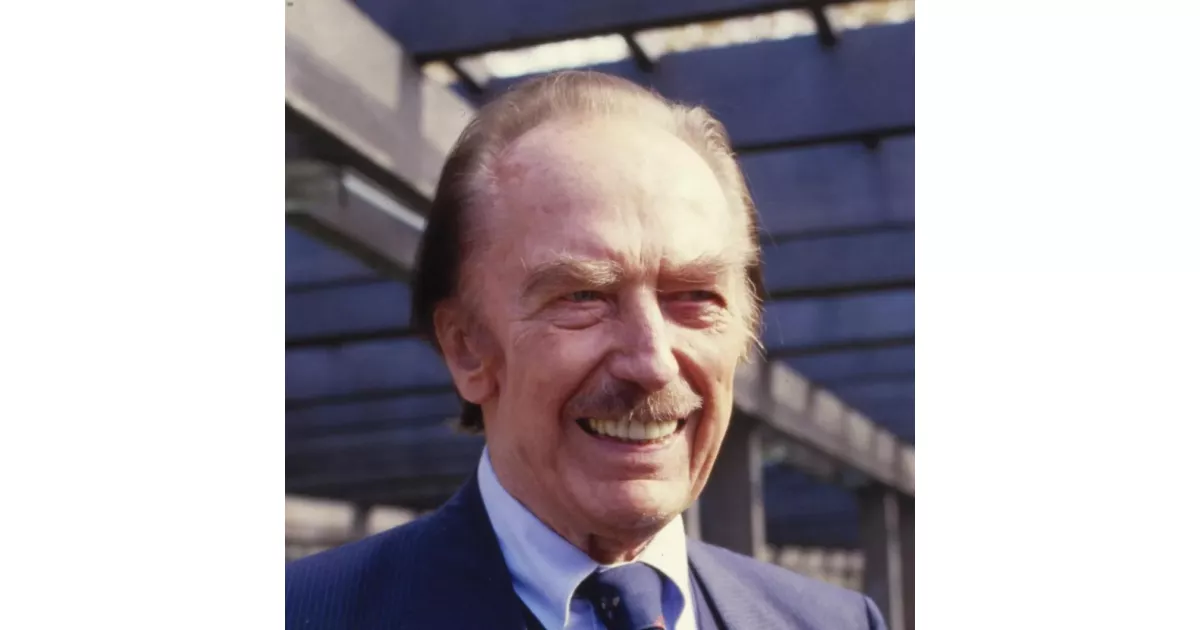How Fred Trump built a successful career. Explore key moments that defined the journey.
Frederick Christ Trump Sr. (1905-1999) was an American real estate developer and businessman known for building and managing affordable housing in New York City, particularly in Brooklyn and Queens. He faced controversy over discriminatory rental practices. He is most notably the father of Donald Trump, the 45th U.S. president. Trump's business acumen and real estate empire significantly influenced his son's career and approach to business. He was a major figure in shaping New York City's housing landscape after World War II.
January 1923: Full-Time Work and Carpentry Studies
In January 1923, Fred Trump began full-time work pulling lumber to construction sites and studying carpentry.
1924: "E. Trump & Son" Advertising
By 1924, the company name "E. Trump & Son" appeared in advertising, and Trump allegedly used a loan from his mother to build his first house.
1926: Purported Building of Homes in Hollis, Queens
By 1926, Trump purportedly built 19 more homes in Hollis, Queens, selling some to finance others.
1927: Incorporation of Company and Arrest at KKK Rally
In 1927, Fred Trump's company was incorporated, and he was arrested at a Ku Klux Klan demonstration.
1933: Opening of Trump Market
In 1933, Fred Trump built one of New York City's first modern supermarkets called Trump Market, modeled after King Kullen.
1934: Acquisition of Mortgage-Servicing Subsidiary
In 1934, Fred Trump and a partner acquired the mortgage-servicing subsidiary of Brooklyn's J. Lehrenkrauss Corporation, leading to real estate ventures and rising fame.
1934: Federal Court Argument
In 1934, Fred Trump argued in federal court why he should deserve a dissolved company's mortgage servicer, potentially exaggerating his career length.
1934: Utilization of FHA Loan Subsidies
In 1934, Fred Trump made use of loan subsidies created by the Federal Housing Administration (FHA).
1936: House Construction with 400 Workers
By 1936, Fred Trump had 400 workers digging foundations for houses priced between $3,000 and $6,250.
1938: Referred to as "the Henry Ford of the Home Building Industry"
In 1938, the Brooklyn Daily Eagle called Fred Trump "the Henry Ford of the home building industry".
1941: Supported Jewish causes
In 1941, partly due to the prominence of Jews in New York, Fred Trump supported Jewish causes, with contributions that convinced some he practiced Judaism. This support started two weeks after the U.S. entered World War II.
1941: Defense Housing Project in Bensonhurst
In 1941, the federal Office of Production Management approved the use of FHA funding for defense housing in Bensonhurst, Brooklyn, but the project was later dissolved.
1942: Construction of 2,000 Homes in Brooklyn
By 1942, Fred Trump had built 2,000 homes in Brooklyn using FHA funds.
1944: Wartime Apartment Construction
By 1944, Fred Trump had constructed 1,360 wartime apartments in Norfolk, Virginia, along with barracks and garden apartments for U.S. Navy personnel.
1947: Shore Haven Construction Begins
In 1947, Fred Trump started building Shore Haven in Bensonhurst, Brooklyn, a project that would include 32 six-story buildings and a shopping center.
1949: Completion of Shore Haven
In 1949, Fred Trump completed Shore Haven in Bensonhurst, Brooklyn, covering 30 acres and securing $9 million in FHA funding.
1950: Construction of Beach Haven Apartments
In 1950, Fred Trump built the 23-building Beach Haven Apartments near Coney Island, obtaining $16 million in FHA funds.
1954: Senate Investigation for Windfall Gains
In 1954, Fred Trump was included in a list of city builders accused of profiteering from government contracts and investigated by a U.S. Senate banking committee for windfall gains.
1954: Senate Committee Investigation for Profiteering
In 1954, Fred Trump was investigated by a U.S. Senate committee for allegedly profiteering from government contracts.
1961: Donation to Robert F. Wagner Jr.'s Re-election Campaign
In 1961, Fred Trump donated $2,500 to the re-election campaign of New York mayor Robert F. Wagner Jr., assisting his favor for the construction of Trump Village.
1961: Contributed to city politicians
In 1961, Fred Trump, registered as a Republican, contributed to Democratic city politicians in New York, including $2,500 to Mayor Wagner's campaign, which enabled the construction of Trump Village.
1963: Construction of Trump Village
In 1963, construction began on Trump Village, a large apartment complex in Coney Island, and one of Fred Trump's biggest projects.
July 1, 1965: Purchase of Steeplechase Park
On July 1, 1965, Fred Trump purchased Coney Island's Steeplechase Park for $2.3 million with plans to build luxury apartments.
September 1966: Demolition of Steeplechase Park's Pavilion of Fun
In September 1966, Fred Trump demolished the Pavilion of Fun at Steeplechase Park in a highly publicized ceremony.
1966: New York State Investigation for Profiteering
In 1966, Fred Trump faced another investigation, this time by New York State, concerning profiteering.
1968: Donald joins father's business and secures deferment
In 1968, Donald Trump joined his father Fred's real-estate business, starting in Brooklyn. Fred reportedly secured a deferment from the Vietnam War for Donald by arranging a diagnosis of bone spurs.
1971: Donald Trump Becomes President of Real-Estate Business
In 1971, Donald Trump assumed the role of president in his father's real-estate business.
1971: Donald becomes president of the company
In 1971, Donald Trump became the president of the company, with Fred Trump becoming the chairman.
1973: Company becomes the Trump Organization
Around 1973, Donald Trump began calling the company 'the Trump Organization'.
1974: Trump acquires stake in Starrett City
In 1974, Trump acquired up to 20% of Brooklyn's Starrett City, a large, federally subsidized housing complex which opened with the stated desegregation goal of renting 70% of its units to white people and the rest to minorities.
1982: Trump appears on Forbes 400 list
Trump appeared on the initial Forbes 400 list of richest Americans in 1982 with an estimated $200 million fortune split with his son Donald. That same year, Fred sold two Norfolk towers and some Hampton Roads military housing, the latter for $8–9 million.
1985: Louise Sunshine leaves organization
Louise Sunshine, the organization vice president from 1973, left the company in 1985.
1986: News article concerning political donations
In 1986, the FBI released a small file it had on Fred Trump, which includes a news article concerning political donations by Trump Management.
1987: Fred invests in Trump Palace Condominiums
In 1987, when Donald's loan debt to his father exceeded $11 million, Fred invested $15.5 million in Trump Palace Condominiums.
1990: Fred provides funds for Trump's Castle bond payment
In late 1990, when an $18.4 million bond payment for Atlantic City's Trump's Castle was due, Fred sent a bookkeeper to buy $3.5 million in casino chips, which were not used, to facilitate the payment. The state's Casino Control Commission later found the transaction to constitute an illegal loan and fined the casino $65,000.
1991: Fred sells shares to Donald for $10,000
In 1991, Fred sold his shares in Trump Palace Condominiums to his son for $10,000, thus appearing to evade millions of dollars in gift taxes and benefiting from a legally questionable write-off.
1992: Donated property to NKF
In 1992, Fred Trump donated one of his least profitable properties to the National Kidney Foundation (NKF). According to The New York Times, it was one of the largest charitable donations he ever made, and he claimed a deduction proportional to its stated value of $34 million on his tax return.
1992: Fred and Donald set up a subsidiary company
In 1992, Fred and Donald set up a subsidiary company in which each of Fred's living children owned a 20% stake.
2015: Donald Trump claims receiving a small loan from his father
During his 2015 campaign for U.S. president, Donald Trump claimed that his father had given him "a small loan of a million dollars" which he used to build "a company that's worth more than $10 billion".
May 2016: Reported use of pseudonym "Mr. Green"
In May 2016, Fortune reported that Fred Trump had used the false name "Mr. Green" to anonymously inquire about property values.
October 2016: FBI released small file on Fred Trump
In October 2016, the FBI released a small file it had on Fred Trump in response to Freedom of Information Act requests. The file included a news article from 1986 concerning political donations by Trump Management, and a memo from 1991 implying ties to organized crime.
October 2018: New York Times exposé on Fred and Donald Trump's finances
In October 2018, a New York Times exposé on Fred and Donald Trump's finances revealed that Fred created 295 income streams for Donald and concludes that the latter "was a millionaire by age 8", receiving $413 million from Fred's business empire over his lifetime, including over $60.7 million in loans, which were largely unreimbursed.
2018: New York Times details tax fraud
As detailed in 2018 by The New York Times, the business entity had no apparent legitimate purpose and was evidently used to conduct tax fraud by funneling millions of dollars of Fred's wealth to his progeny without paying gift taxes.
2023: Inflation adjustment of 2018 amount
In 2023, the $413 million Donald Trump received from Fred's business empire in 2018 equates to $483.6 million, and the $60.7 million in loans equates to $163.9 million.
Mentioned in this timeline

Donald John Trump is an American politician media personality and...

Elizabeth II reigned as Queen of the United Kingdom and...

John F Kennedy JFK was the th U S President...

Benjamin Bibi Netanyahu is a prominent Israeli politician and diplomat...
Germany officially the Federal Republic of Germany is a Western...

Inflation in economics signifies an increase in the average price...
Trending
2 months ago Kansas Jayhawks face UCF Knights: Sorsby's performance crucial in Big 12 matchup.
Jaylen Warren is a professional American football running back currently playing for the Pittsburgh Steelers in the NFL He had...

7 months ago Michelle Obama Reveals Barack's Joke After Her Mother's Death and Pope's Viewing Habits.

Tony Dow was a renowned American actor producer director and sculptor best known for his role as Wally Cleaver in...
2 months ago IREN Stock Surges on AI Cloud Deals and Bitcoin Mining Integration.
10 days ago Lawsuit Filed Over KISD Stabbing; Killeen Principal Resigns From Ira Cross
Popular

Candace Owens is an American conservative political commentator and author...

Ilhan Omar is an American politician currently serving as the...

XXXTentacion born Jahseh Dwayne Ricardo Onfroy was a controversial yet...

Oprah Winfrey an American talk show host television producer actress...

Frederick Christ Trump Sr - was an American real estate...

Tom Cotton is an American politician and Army veteran currently...
